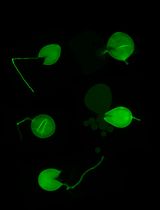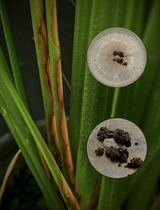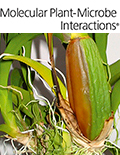- Submit a Protocol
- Receive Our Alerts
- Log in
- /
- Sign up
- My Bio Page
- Edit My Profile
- Change Password
- Log Out
- EN
- EN - English
- CN - 中文
- Protocols
- Articles and Issues
- For Authors
- About
- Become a Reviewer
- EN - English
- CN - 中文
- Home
- Protocols
- Articles and Issues
- For Authors
- About
- Become a Reviewer
Chitin Extraction and Content Measurement in Magnaporthe oryzae
Published: Vol 7, Iss 5, Mar 5, 2017 DOI: 10.21769/BioProtoc.2164 Views: 8989
Reviewed by: Zhaohui LiuAnna Дмитриевна KozhevnikovaAnonymous reviewer(s)

Protocol Collections
Comprehensive collections of detailed, peer-reviewed protocols focusing on specific topics
Related protocols

In Vitro Hyphal Branching Assay Using Rhizophagus irregularis
Takaya Tominaga and Hironori Kaminaka
Aug 20, 2024 2237 Views

Silencing Arbuscular Mycorrhizal Fungal Gene Using Chitosan Nanoparticle-Mediated dsRNA Delivery System
Chumei Yan [...] Xianan Xie
Jun 5, 2025 2557 Views

A Reliable In Planta Inoculation and Antifungal Screening Protocol for Rhizoctonia solani-Induced Sheath Blight in Rice
Alinaj Yasin [...] Palash Deb Nath
Nov 5, 2025 1465 Views
Abstract
Chitin is a linear polysaccharide composed of β (1→4)-linked N-acetylglucosamine (GlcNAc) residues. In fungi, chitin is an important component of the cell wall. Here, we provide a protocol to measure the chitin content of fungal cells using Magnaporthe oryzae as an example.
Keywords: ChitinBackground
Chitin is an important component of the cell wall in fungal pathogens and is well known as a pathogen associated molecule pattern (PAMP). Determining the chitin content of a fungal species is important for studying fungal biology and host-pathogen interactions. The Morgan-Elson method based on colorimetric approach has been adapted in yeast to measure cellular chitin levels (Leloir and Cardini, 1953; Bulik et al., 2003; Baker et al., 2007). However, there is no specific protocol established for Magnaporthe oryzae, which is the causal agent of rice blast, the most important fungal disease in the world. Here, we describe a reliable and simple protocol which was modified from the Morgan-Elson method to test the chitin content of M. oryzae (Song et al., 2010).
Materials and Reagents
- Microtube
- Microtiter plates (Corning, Costar®, catalog number: 42592 )
- Miracloth (EMD Millipore, catalog number: 475855 )
- Cells of Magnaporthe oryzae
- Potassium hydroxide (KOH) (Sangon Biotech, catalog number: A610441 )
- 10x phosphate buffered saline (PBS, 1.35 M NaCl, 47 mM KCl, 100 mM Na2HPO4, 20 mM NaH2PO4, pH = 7.4) (Beyotime, catalog number: ST476 )
- Streptomyces plicatus chitinase (Sigma-Aldrich, catalog number: C6137 )
- Sodium borate (Sangon Biotech, catalog number: A100390 )
- GlcNAc (Sigma-Aldrich, catalog number: PHR1432-1G )
- Sodium hydrogen (Na2HPO4) (Sangon Biotech, catalog number: A501727 )
- Citric acid (Sangon Biotech, catalog number: A501702 )
- p-dimethylaminobenzaldehyde (Sigma-Aldrich, catalog number: D2004 )
- Hydrochloric acid (HCl)
- Acetic acid (Sangon Biotech, catalog number: A501931 )
- Biotin
- Pyridoxin
- Thiamine
- Riboflavin
- p-aminobenzoic acid
- nicotinic acid
- ZnSO4·7H2O
- H3BO3
- MnCl2·4H2O
- FeSO4·7H2O
- CoCl2·6H2O
- CuSO4·5H2O
- Na2MnO4·2H2O
- Na4EDTA
- NaNO3
- KCl
- MgSO4·7H2O
- KH2PO4
- D-glucose
- Peptone
- Yeast extract
- Casamino acid
- Agar
- McIlvaine’s buffer (see Recipes)
- Ehrlich’s solution (see Recipes)
- Vitamin solution (see Recipes)
- Trace elements (see Recipes)
- 20x nitrate salts (see Recipes)
- CM medium (see Recipes)
Equipment
- Freeze dryer (Marin Christ German)
- Vortex mixer
- Water bath (SHEL Lab, model: W6M-2 )
- Centrifuge (Eppendorf centrifuge) (Eppendorf, model: 5418 )
- Incubator shaker (Crystal Technology & Industries, model: IS-RSD3 )
- pH/ATU electrode (Sartorius, German)
- Microplate reader (Molecular Devices, model: VersaMax ELISA )
- PCR instrument (Takara Bio, model: TP600 )
- Eppendorf micropipette (1,000 μl, 100 μl, 10 μl)
- Dark glass bottle
Software
- SPSS 2.0 (Chicago, IL, USA)
Procedure
- All of the strains are cultured on solid CM medium for 7 days at 28 °C. The agar culture is cut into 1 x 1 mm squares and the squares are cultured in liquid CM for another 2 days.
- Filtered through one layer of Miracloth to collect mycelium from liquid CM. Then the mycelium is quickly lyophilized by a freeze dryer for 24 h. 5 mg mycelium is mixed with 1 ml 6% KOH in each 2 ml microtube using a vortex mixer and then incubated in a water bath at 80 °C for 90 min.
- Samples are centrifuged at 16,000 x g for 10 min, and the suspension is discarded.
- Each pellet is washed with 1 ml 1x PBS (which is diluted from 10x PBS) for three times and then centrifuged at 16,000 x g for 5 min to discard the suspension.
- Each pellet is resuspended with 0.5 ml of McIlvaine’s buffer (see Recipes) (Baker et al., 2007). 100 μl chitinase is added into each sample. And then samples are incubated at 37 °C for 16 h in the dark, at 220 rpm in an incubator shaker.
- Chitinase-treated samples are mixed with equal volume of 0.27 M sodium borate (pH = 9.0) and incubated at 100 °C for 10 min in a PCR instrument.
- After being cooled down to room temperature, 200 μl of each sample is added to 1 ml Ehrlich’s solution (see Recipes) and then incubate at 37 °C for 30 min in an incubator shaker.
- 100 μl of each sample is transferred into a well of a microtiter plate with low-evaporation and the absorbance is measured at 585 nm by a microplate reader. Standard curves are prepared from stocks of 0.1 to 2.0 mM (0.1 mM, 0.5 mM, 1.0 mM, 1.5 mM and 2.0 mM) GlcNAc.
Data analysis
Standard curves are prepared from stocks of 0.1 to 2.0 mM GlcNAc. Each result is presented at least three replicated measurements. The significance of differences between treatments is statistically evaluated using SDs and one-way analysis of variance (ANOVA) in SPSS 2.0 (Chicago, IL, USA). Data for two specific different treatments are compared statistically using ANOVA, followed by an F-test if the ANOVA result is significant at P < 0.05 or P < 0.01.
Notes
- Both McIlvaine’s buffer and Ehrlich’s solution need to be prepared just before use.
- In step 1, 25 squares are enough and the volume of the liquid CM is 70 ml.
- In step 2, samples are incubated in a water bath at 80 °C for 90 min. Samples need to be vortexed every 15 min.
- In step 6, after being extracted at 100 °C for 10 min, all the samples should be cooled on ice to room temperature immediately.
- In step 6, after being extracted at 100 °C for 10 min in the PCR instrument, the solution is clear and transparent
- In step 7, the Ehrlich’s solution is clear and does not need to be centrifuged.
- If the samples are difficult to suspend, break the pellet by an injector or a micropipette.
Recipes
- McIlvaine’s buffer
0.2 M Na2HPO4
0.1 M citric acid (pH = 6.0) - Ehrlich’s solution
10 g p-dimethylaminobenzaldehyde in 12.5 ml concentrated HCl (37%) and 87.5 ml glacial acetic acid - Vitamin solution (100 ml)
0.01 g Biotin
0.01 g Pyridoxin
0.01 g Thiamine
0.01 g Riboflavin
0.01 g p-aminobenzoic acid
0.01 g nicotinic acid
Add ddH2O to 100 ml and store in a dark glass bottle at 4 °C - Trace elements (100 ml)
2.2 g ZnSO4·7H2O
1.1 g H3BO3
0.5 g MnCl2·4H2O
0.5 g FeSO4·7H2O
0.17 g CoCl2·6H2O
0.16 g CuSO4·5H2O
0.15 g Na2MnO4·2H2O
5 g Na4EDTA
Add ddH2O to 100 ml and adjust the pH to 5.8, store at 4 °C - 20x nitrate salts (1 L)
120 g NaNO3
10.4 g KCl
10.4 g MgSO4·7H2O
30.4 g KH2PO4
Add ddH2O to 1 L and store at 4 °C - CM medium
10 g D-glucose
2 g peptone
1 g yeast extract
1 g casamino acid
1 ml vitamin solution
1 ml trace elements
50 ml 20x nitrate salts
Add ddH2O to 1 L
For solid media add 15 g agar and autoclave at 121 °C for 20 min
Acknowledgments
This research was supported by the key program of Natural Science Foundation of China (Grant No. 31530063, ZZ), National Science Foundation for Distinguished Young Scholars of China (Grant No. 31325022 to ZZ), Natural Science Foundation of China (Grant No. 31271998, ZZ), and the especially appointed professorship (Jiangsu, China).
References
- Baker, L. G., Specht, C. A., Donlin, M. J. and Lodge, J. K. (2007). Chitosan, the deacetylated form of chitin, is necessary for cell wall integrity in Cryptococcus neoformans. Eukaryot Cell 6(5): 855-867.
- Bulik, D. A., Olczak, M., Lucero, H. A., Osmond, B. C., Robbins, P. W. and Specht, C. A. (2003). Chitin synthesis in Saccharomyces cerevisiae in response to supplementation of growth medium with glucosamine and cell wall stress. Eukaryot Cell 2(5): 886-900.
- Leloir, L. F. and Cardini, C. E. (1953). The biosynthesis of glucosamine. Biochim Biophys Acta 12(1-2): 15-22.
- Song, W., Dou, X., Qi, Z., Wang, Q., Zhang, X., Zhang, H., Guo, M., Dong, S., Zhang, Z., Wang, P. and Zheng, X. (2010). R-SNARE homolog MoSec22 is required for conidiogenesis, cell wall integrity, and pathogenesis of Magnaporthe oryzae. PLoS One 5(10): e13193.
Article Information
Copyright
© 2017 The Authors; exclusive licensee Bio-protocol LLC.
How to cite
Liu, X. and Zhang, Z. (2017). Chitin Extraction and Content Measurement in Magnaporthe oryzae. Bio-protocol 7(5): e2164. DOI: 10.21769/BioProtoc.2164.
Category
Microbiology > Microbial biochemistry > Carbohydrate
Microbiology > Microbe-host interactions > Fungus
Biochemistry > Carbohydrate > Polysaccharide
Do you have any questions about this protocol?
Post your question to gather feedback from the community. We will also invite the authors of this article to respond.
Share
Bluesky
X
Copy link










